Microgrid
Microgrid
A microgrid is a small-scale network connecting consumers to an electricity supply. A microgrid can have multiple connected distributed energy resources such as solar arrays, EV chargers, and BESS. It can operate in grid-connected or island mode by connecting or disconnecting from the grid.
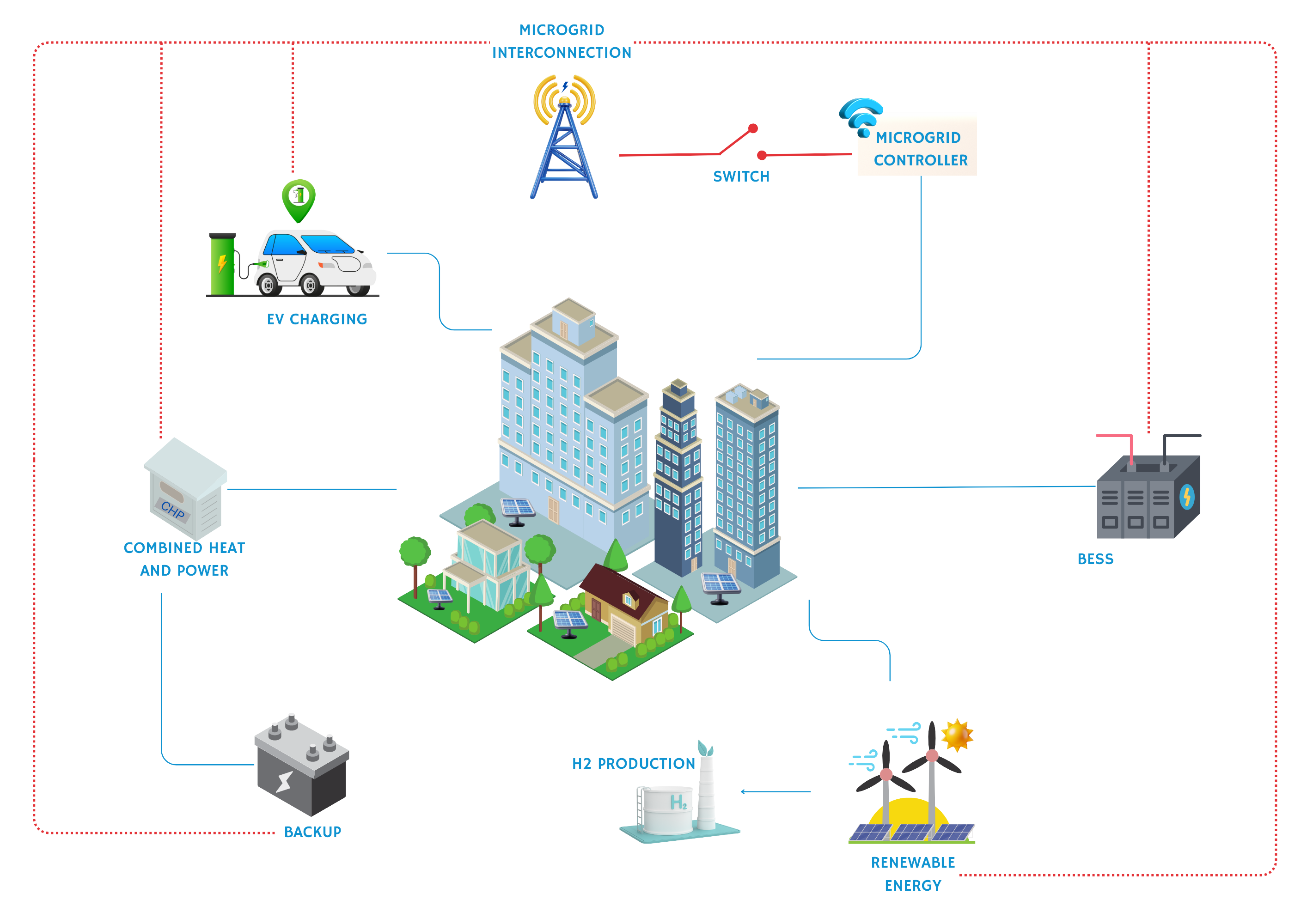
A microgrid is a small-scale network connecting consumers to an electricity supply. A microgrid can have multiple connected distributed energy resources such as solar arrays, EV chargers, and BESS. It can operate in grid-connected or island mode by connecting or disconnecting from the grid.

Community and Campus Microgrids
Community and campus microgrids are localized energy grids that operate both connected to the larger traditional grid and independently. These microgrids are designed to serve a specific geographic footprint, such as a university campus, hospital complex, business district, or a residential area. They incorporate a mix of energy resources, including distributed generators, batteries, and renewable sources like solar. By managing these resources, microgrids can provide reliable, efficient, and sustainable energy to their designated communities or campuses.
Characteristics

Self Sufficiency
Microgrids can operate in “island mode,” disconnected from the main power grid, ensuring power continuity even during power outages.

Local Control
They allow communities or campuses to control their own energy production and consumption, tailoring it to their specific needs and priorities.
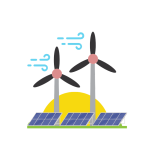
Integration of Renewable Energy
Microgrids often incorporate renewable energy sources, reducing dependency on fossil fuels and lowering carbon emissions.
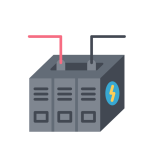
Advanced Energy Storage
Batteries and other storage technologies are used to store excess energy, which can be utilized when production from renewable sources is low or demand is high.

Smart Grid Technologies
Utilizes smart meters, energy management systems, and automated controls to balance supply and demand, enhance energy savings, and ensure reliability.

Advanced Energy Storage
Batteries and other storage technologies are used to store excess energy, which can be utilized when production from renewable sources is low or demand is high.

Smart Grid
Technologies
Utilizes smart meters, energy management systems, and automated controls to balance supply and demand, enhance energy savings, and ensure reliability.
Benefits

Increased Energy Reliability and Resilience:
Microgrids can maintain power during broader grid failures, critical for hospitals, emergency services, and sensitive research facilities.

Energy Efficiency:
By generating energy close to where it is consumed and minimizing transmission losses, microgrids can achieve higher efficiency levels.

Environmental Sustainability:
The integration of renewable energy sources reduces greenhouse gas emissions and pollution.

Cost Savings:
Over time, microgrids can offer economic benefits through reduced energy costs, especially in areas with high utility rates or where incentives are provided for renewable energy use.

Community Empowerment:
They can stimulate local economies by creating jobs in the renewable energy sector and give communities control over their energy sources.
Benefits
Increased Energy Reliability and Resilience:
Microgrids can maintain power during broader grid failures, critical for hospitals, emergency services, and sensitive research facilities.
Energy Efficiency:
By generating energy close to where it is consumed and minimizing transmission losses, microgrids can achieve higher efficiency levels.
Environmental Sustainability:
The integration of renewable energy sources reduces greenhouse gas emissions and pollution.
Cost Savings:
Over time, microgrids can offer economic benefits through reduced energy costs, especially in areas with high utility rates or where incentives are provided for renewable energy use.
Community Empowerment:
They can stimulate local economies by creating jobs in the renewable energy sector and give communities control over their energy sources.
Community and campus microgrids are at the forefront of a shift towards more decentralized, reliable, and sustainable energy systems. They embody a progressive approach to energy management that leverages local resources and technology to meet the unique needs of specific areas, paving the way for a more resilient and environmentally friendly energy future.
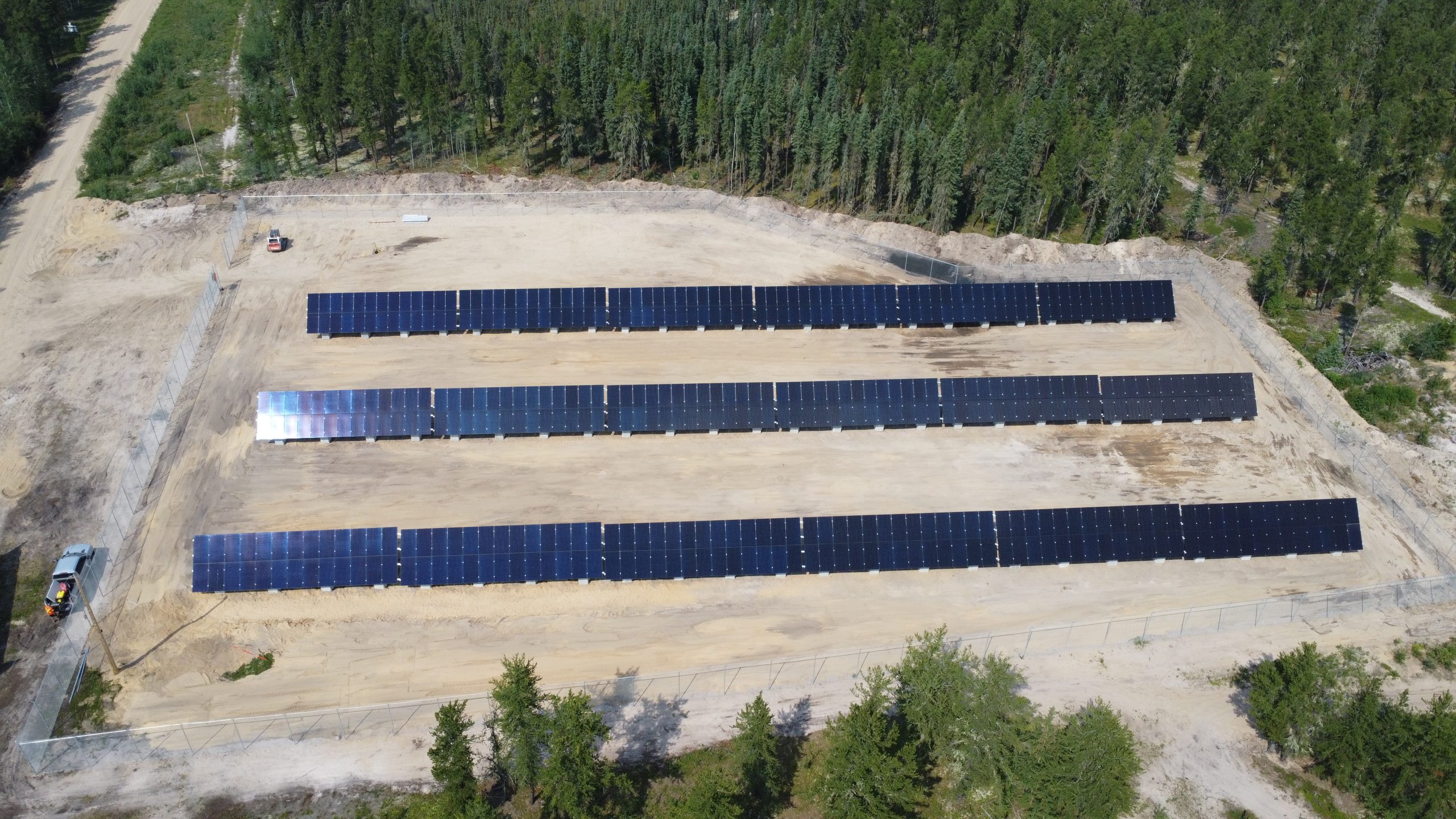
Descharme Lake (SK) Solar Array Project
Hybrid Renewable Energy Containers
Hybrid renewable energy containers are compact, modular systems designed to provide reliable, off-grid power generation around the clock, all year round (8,760 hours, accounting for every hour in a year). These systems intelligently combine solar panels, battery energy storage systems (BESS), and a backup generator (often running on a low-emission fuel like biodiesel, natural gas, or even hydrogen). By optimizing the mix of renewable energy, storage capacity, and on-demand power generation, these containers can significantly minimize emissions—often by 90% or more compared to traditional diesel generators.
Components
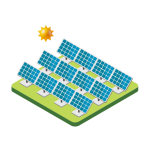
Solar Panels
Capture solar energy and convert it into electricity. They are the primary source of power in these systems, exploiting the abundant and renewable nature of solar energy.

Battery Energy Storage System
Stores excess electricity produced by solar panels for use when solar power is unavailable (during night or cloudy days). It ensures a steady electricity supply and maximizes the use of solar energy.

Backup Generator
Provides an alternative power source during prolonged periods of insufficient sunlight or unusually high energy demand. Ideally, it runs on a low-emission fuel to align with the system’s goal of minimizing environmental impact.

Energy Management System
A smart control system that optimizes the operation of all components. It decides when to draw power from the solar panels, when to use stored energy, and when to activate the backup generator, aiming for efficiency and minimal fuel use.
Operations

During daylight, solar panels generate electricity to meet immediate power needs and charge the battery system with any surplus.

The BESS supplies electricity when solar production is insufficient, ensuring continuous power without resorting to the generator.

The backup generator is used as a last resort, primarily during extended periods of low solar output or exceptionally high demand, reducing reliance on fossil fuels.

The EMS continuously monitors and adjusts the system, prioritizing renewable sources and storage to minimize generator use and emissions.

Benefits

Reduced Emissions:
By relying primarily on solar power and efficiently using batteries, these systems can drastically cut CO2 and other pollutant emissions compared to traditional generators.

Energy Independence:
They provide a self-sufficient power solution, ideal for remote or disaster-stricken areas without reliable grid access.

Cost-Effective:
Over their lifecycle, they can offer significant savings on fuel and maintenance compared to conventional power generation methods.

Scalability and Flexibility:
Modular design allows for easy scaling and adaptation to a wide range of power needs and conditions.

Community Empowerment:
They can stimulate local economies by creating jobs in the renewable energy sector and give communities control over their energy sources.
Benefits
Reduced Emissions:
By relying primarily on solar power and efficiently using batteries, these systems can drastically cut CO2 and other pollutant emissions compared to traditional generators.
Energy Independence:
They provide a self-sufficient power solution, ideal for remote or disaster-stricken areas without reliable grid access.
Cost-Effective:
Over their lifecycle, they can offer significant savings on fuel and maintenance compared to conventional power generation methods.
Scalability and Flexibility:
Modular design allows for easy scaling and adaptation to a wide range of power needs and conditions.
Community Empowerment:
They can stimulate local economies by creating jobs in the renewable energy sector and give communities control over their energy sources.
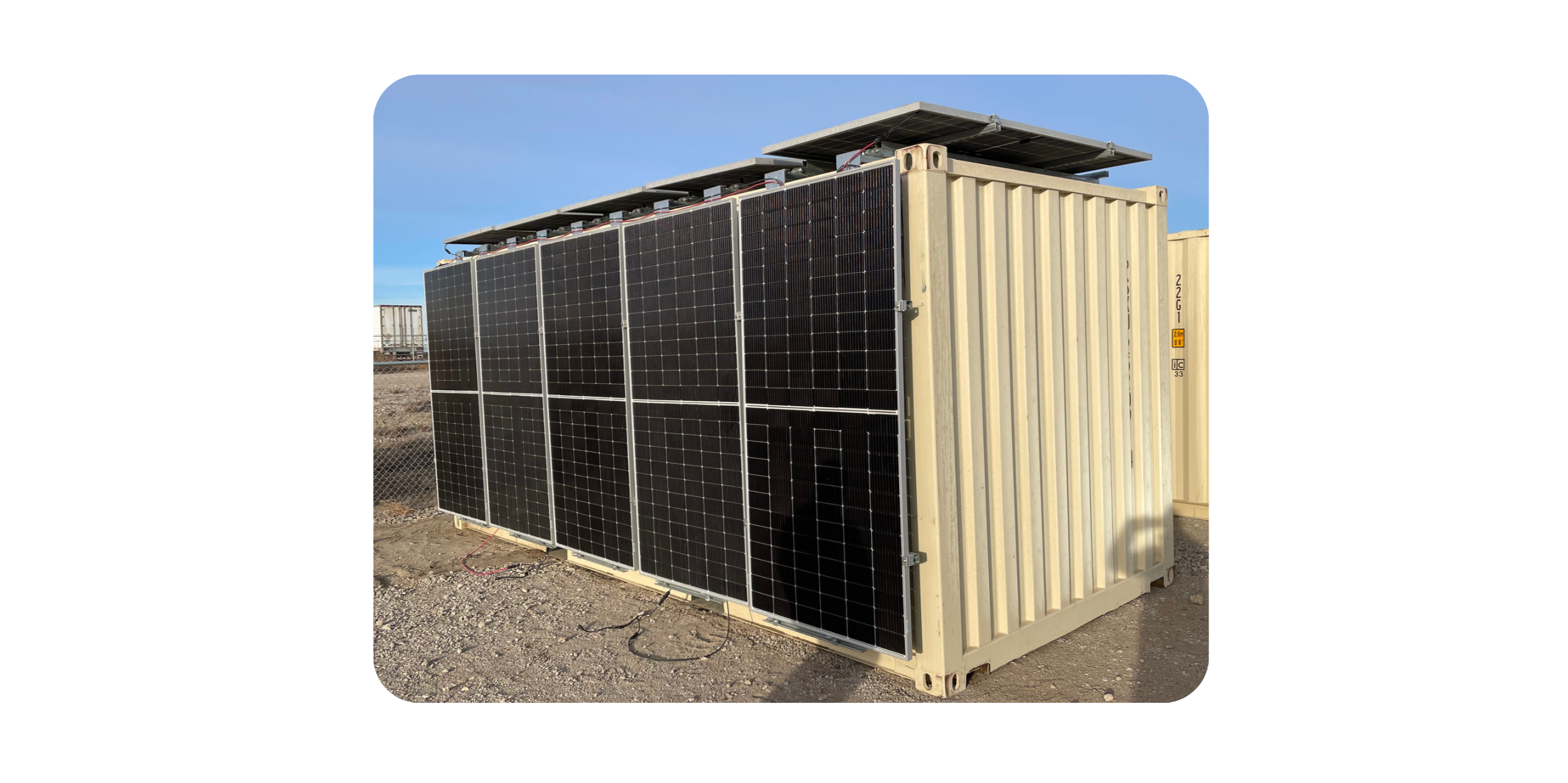
Renewable Energy Container

Contact Information
#321 2555 Grasswood Road East, Saskatoon, SK S7T 0K1
306-803-5869

